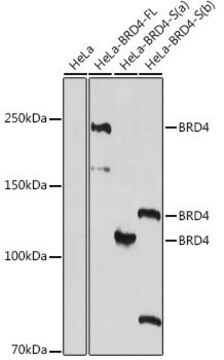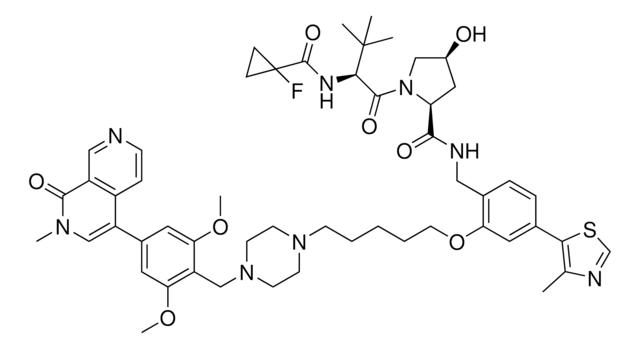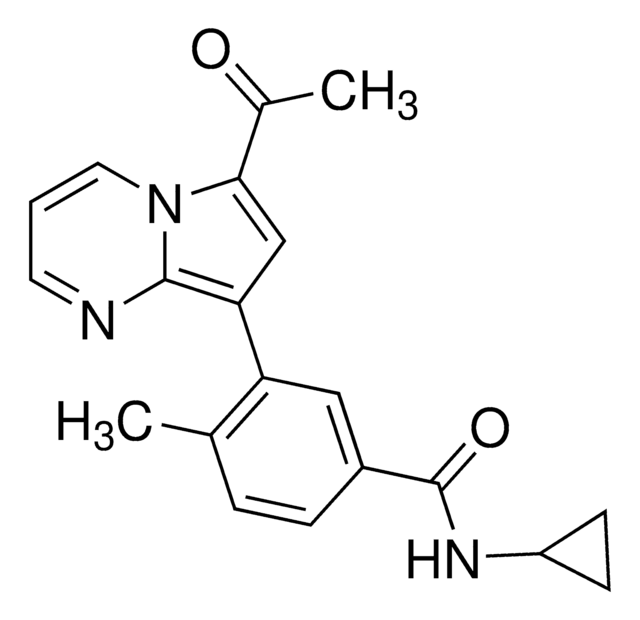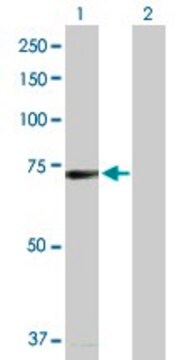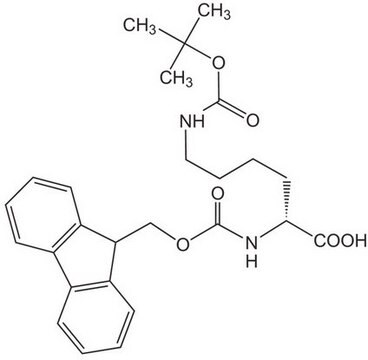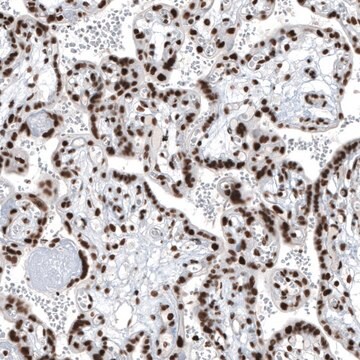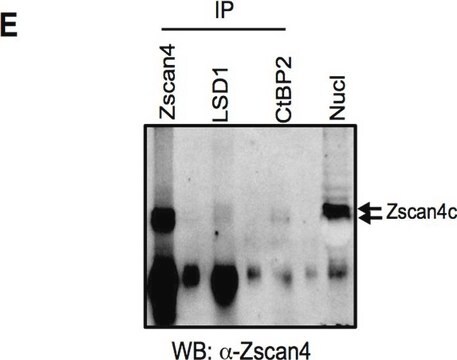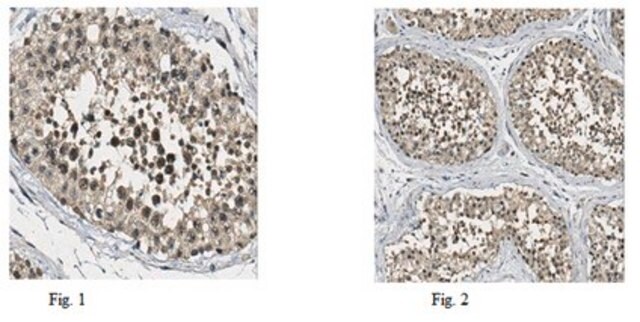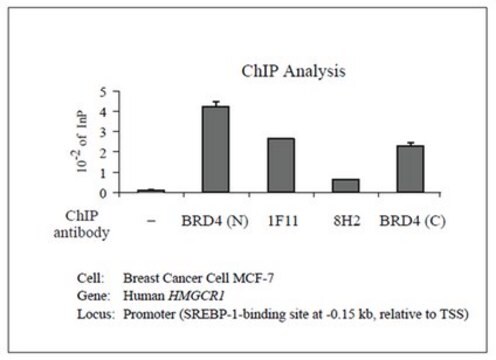ABE1391
Anti-Brd4 Antibody
serum, from rabbit
Sinónimos:
Bromodomain-containing protein 4, Mitotic chromosome-associated protein, MCAP, Brd4
About This Item
Productos recomendados
origen biológico
rabbit
Nivel de calidad
forma del anticuerpo
serum
tipo de anticuerpo
primary antibodies
clon
polyclonal
reactividad de especies
human
reactividad de especies (predicha por homología)
mouse
técnicas
ChIP: suitable
immunocytochemistry: suitable
western blot: suitable
Nº de acceso NCBI
Nº de acceso UniProt
Condiciones de envío
dry ice
modificación del objetivo postraduccional
unmodified
Información sobre el gen
mouse ... Brd4(57261)
Descripción general
Especificidad
Inmunógeno
Aplicación
Epigenetics & Nuclear Function
Epigenetics & Nuclear Function
Chromatin Biology
Histones
Chromatin Immunoprecipitation (ChIP): A representative lot of this antibody was reported to work in ChIP using chromatin from NIH3T3 cells. See Mochizuki, K., et al. (2008) and Anup, D., et al. (2009).
Immunocytochemistry: A representative lot of this antibody was reported to work in ICC. See Anup, D., et al. (2000) and Anup, D., et al. (2009).
Calidad
Western Blotting Analysis: 1:1,000 dilution of this antibody detected Brd4 in 10 µg of HEK293 cell lysate.
Descripción de destino
This antibody primarily detects 100 kd short form of Brd4 and to lesser extent larger 180 kD form (see Alsarraj J., et al. (2013 for additional details on performance of this antibody).
Forma física
Almacenamiento y estabilidad
Handling Recommendations: Upon receipt and prior to removing the cap, centrifuge the vial and gently mix the solution. Aliquot into microcentrifuge tubes and store at -20°C. Avoid repeated freeze/thaw cycles, which may damage IgG and affect product performance.
Otras notas
Cláusula de descargo de responsabilidad
¿No encuentra el producto adecuado?
Pruebe nuestro Herramienta de selección de productos.
Opcional
Código de clase de almacenamiento
10 - Combustible liquids
Clase de riesgo para el agua (WGK)
WGK 1
Certificados de análisis (COA)
Busque Certificados de análisis (COA) introduciendo el número de lote del producto. Los números de lote se encuentran en la etiqueta del producto después de las palabras «Lot» o «Batch»
¿Ya tiene este producto?
Encuentre la documentación para los productos que ha comprado recientemente en la Biblioteca de documentos.
Nuestro equipo de científicos tiene experiencia en todas las áreas de investigación: Ciencias de la vida, Ciencia de los materiales, Síntesis química, Cromatografía, Analítica y muchas otras.
Póngase en contacto con el Servicio técnico